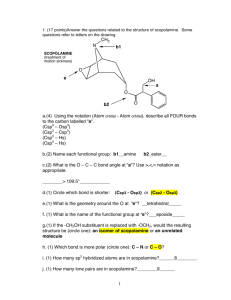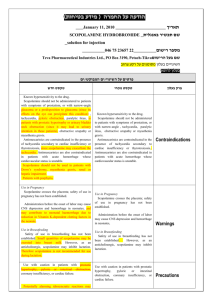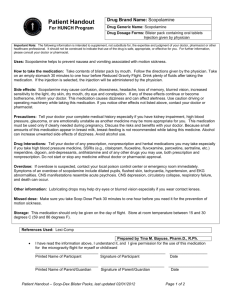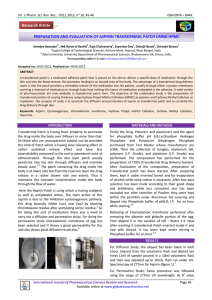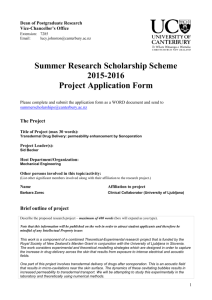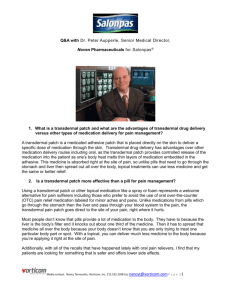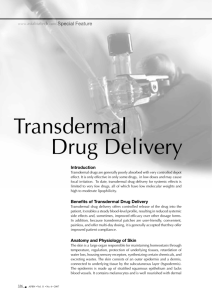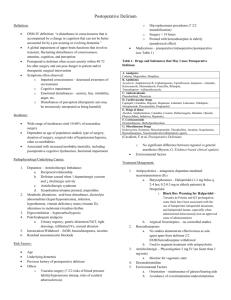Transdermal Scopolamine: Delirium Right Before Our Eyes
advertisement
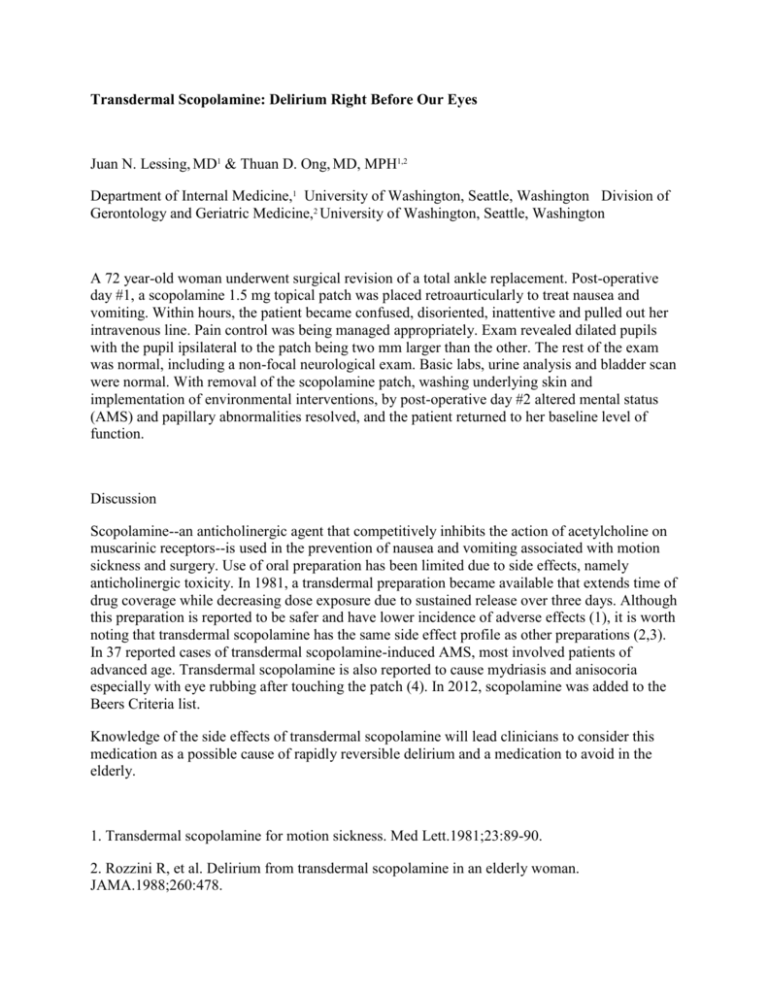
Transdermal Scopolamine: Delirium Right Before Our Eyes Juan N. Lessing, MD1 & Thuan D. Ong, MD, MPH1,2 Department of Internal Medicine,1 University of Washington, Seattle, Washington Division of Gerontology and Geriatric Medicine,2 University of Washington, Seattle, Washington A 72 year-old woman underwent surgical revision of a total ankle replacement. Post-operative day #1, a scopolamine 1.5 mg topical patch was placed retroaurticularly to treat nausea and vomiting. Within hours, the patient became confused, disoriented, inattentive and pulled out her intravenous line. Pain control was being managed appropriately. Exam revealed dilated pupils with the pupil ipsilateral to the patch being two mm larger than the other. The rest of the exam was normal, including a non-focal neurological exam. Basic labs, urine analysis and bladder scan were normal. With removal of the scopolamine patch, washing underlying skin and implementation of environmental interventions, by post-operative day #2 altered mental status (AMS) and papillary abnormalities resolved, and the patient returned to her baseline level of function. Discussion Scopolamine--an anticholinergic agent that competitively inhibits the action of acetylcholine on muscarinic receptors--is used in the prevention of nausea and vomiting associated with motion sickness and surgery. Use of oral preparation has been limited due to side effects, namely anticholinergic toxicity. In 1981, a transdermal preparation became available that extends time of drug coverage while decreasing dose exposure due to sustained release over three days. Although this preparation is reported to be safer and have lower incidence of adverse effects (1), it is worth noting that transdermal scopolamine has the same side effect profile as other preparations (2,3). In 37 reported cases of transdermal scopolamine-induced AMS, most involved patients of advanced age. Transdermal scopolamine is also reported to cause mydriasis and anisocoria especially with eye rubbing after touching the patch (4). In 2012, scopolamine was added to the Beers Criteria list. Knowledge of the side effects of transdermal scopolamine will lead clinicians to consider this medication as a possible cause of rapidly reversible delirium and a medication to avoid in the elderly. 1. Transdermal scopolamine for motion sickness. Med Lett.1981;23:89-90. 2. Rozzini R, et al. Delirium from transdermal scopolamine in an elderly woman. JAMA.1988;260:478. 3. Seo SW, et al. Mental confusion associated with scopolamine patch in elderly with mild cognitive impairment. Arch Gerontol Geriatr.2009;49:204-7. 4. Riddick FA, et al. Cruise ship anisocoria. Ann Intern Med.1992;117:95.


